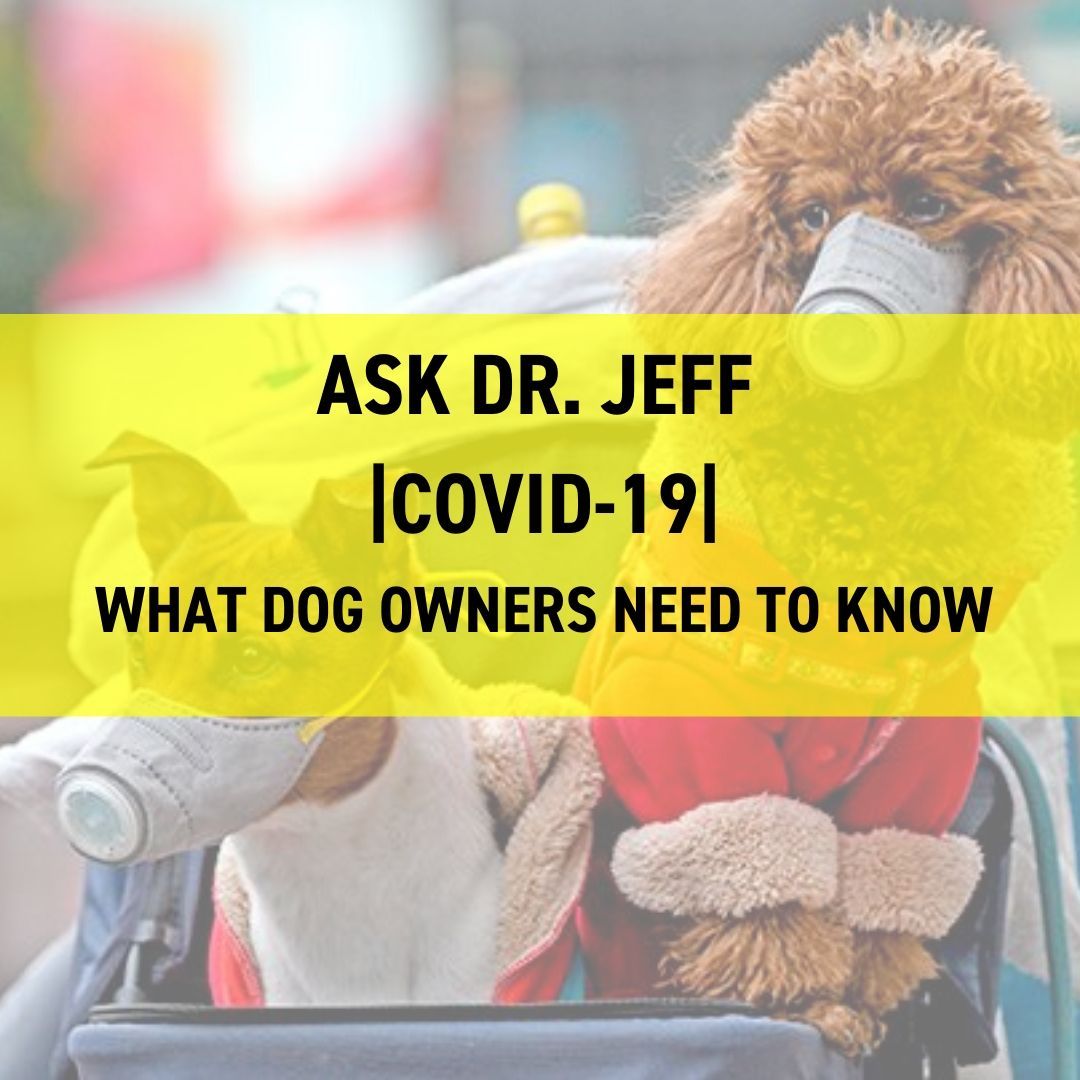COVID-19 - What Dog Owners Need To Know

Since publishing this article, new information about COVID-19 and pets has been released by the CDC. The CDC is recommending people follow the same social distancing guidelines with their pets as they would human family members after a small number of animals, including dogs and cats, were reportedly infected with the virus that causes COVID-19. Read more here.
With the threat of COVID-19 looming over us, there have been a number of questions I’ve received regarding pets. “Can my dog get the virus?”, “Can I get the virus from my dog or cat?”, “Do I need to quarantine my dog?”. Though many of these concerns are justified, it has become clear that we need to set the record straight with regards to COVID-19 and our dogs.
There has been no evidence that dogs can be infected by the virus. The fact is that the virus is species specific, meaning that it cannot infect a dog. Interestingly, there was a dog in Hong Kong who tested a “weak positive” which caused much concern, but the thought was that he may have come in direct contact with an infected person, and had some virus particles in his mouth. This is how a dog can be a source of concern—serving as a vector or as a fomite.
As a vector or reservoir, it could be a remote possibility that a dog could become a temporary carrier of the virus via contact with an infected person and harbor the virus in his saliva while showing no clinical disease. If then, that dog licks a person on the face, he could feasibly pass those virus particles onto that person, who could then become infected. This is pretty far-fetched (pardon the pun) but it could technically happen.
As a fomite, the potential for contagion is a little different. Using the same scenario, an infected person coughs on his dog and the virus particles land on his coat. That dog then comes in contact with another person who pets the dog, inadvertently picks up those particles, touches their face and infects themselves. In this instance, the dog is no different than a door knob or a refrigerator handle—he becomes a physical object transmitting virus particles to a person.
Now, having this understanding, it would be wise to minimize contact with your dog if you, or someone in your house has come in contact with an infected person. If you are self-quarantined, but no one in the home has tested positive or is exhibiting clinical signs, you may elect to keep your dog quarantined as well. It would be ok to get out and exercise your dog, but try to keep him away from other dogs—the same as we would do respecting social distancing.
On the subject of quarantine, make sure to plan for your pets as well—maintaining at least a 14 day supply of food, medications that the pet may be on, and any supplies that your dog may need. Also, as hands on veterinary care will be much more of a challenge because of city, state, and governmental legislators asking businesses to close and most of us to stay in, make sure to download one of the telemedicine/telehealth apps to provide you access to care.
Now that many of us (and our pets) are more homebound than we would like, I can tell you that we typically do better with this than our dogs do. We understand what’s going on—they don’t, so we need to think about how we can get them out, and monitor their exercise to make sure they’re getting enough. With the help of the Fi Collar which can quantify activity via number of steps, the backyard, a long hallway, or even a large family room can become a makeshift dog park. Of course, you can go outside and take your dog for a nice long walk, just try to avoid close contact with other people and other dogs. Remember, they need their activity, and will go “stir-crazy,” and possibly develop some bad habits if they don’t get it! The Fi Collar can become the best activity “partner” your dog could ever have.
Hang in there! This, too, shall pass, and hopefully, sooner than later, we’ll look back at this and feel blessed that we weathered this storm.
Stay smart and stay safe!!
Dr. Jeff Werber
